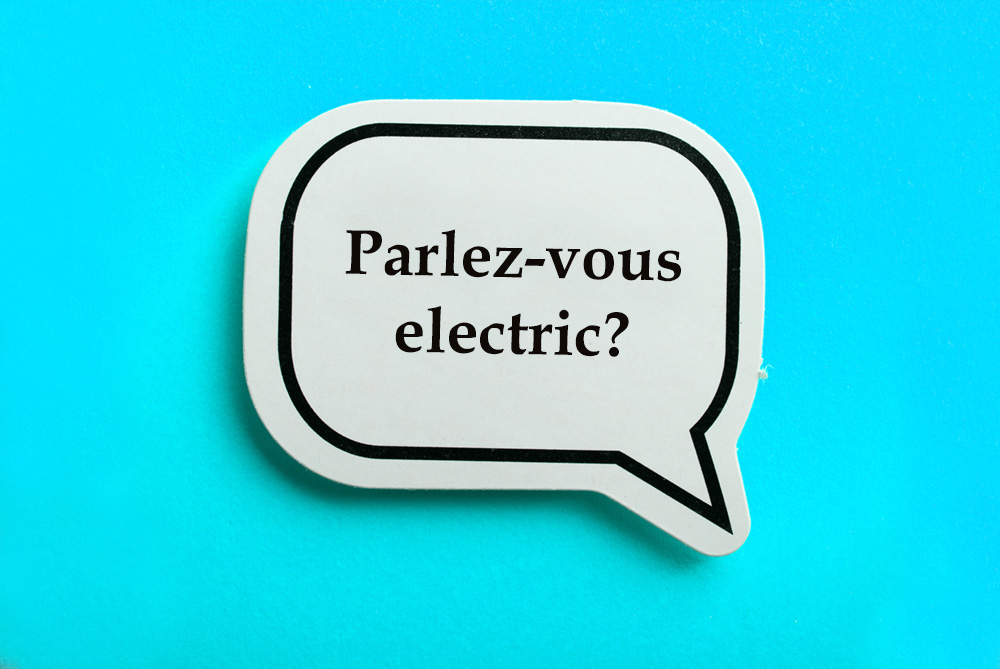S h a r e
The new language of EVs


Posted by
Martin Brown
February 2020
I’m learning a different language.
It’s kWh rather than mpg. I mean we have all become used to mpg, even though our fuel is delivered in litres. But no matter…
Anyway, on the road to zero emissions and electric cars, we need to come to terms with this new language. And you won’t find it on a Babbel or Rosetta Stone course.
So what is kWh? It’s the shorthand for kilowatt-hours and refers to the amount of energy transferred in one hour by 1,000 watts of power.
This is the base step for the new EV lingo because battery-electric cars are measured in kilowatt-hours. A kilowatt-hour gives you about 4 miles of range in an EV.
So I’ve mastered this bit of the hieroglyphics of EV motoring.
Next, how quickly does your battery-electric car charge up? This is related directly to the kWh measurement of your car’s battery.
Think of it in terms of fuel where the battery is the ‘tank’ and electricity the ‘fuel’. To squeeze the fuel into the battery you divide the battery size by the speed of your charger. In other words, the faster the charger, the more fuel it can transfer more quickly into the tank.
There are basically three types of home charger:
- A 3.7kWh which is a slow charger and marginally quicker than a three-pin plug (although you shouldn’t charge your EV from the mains like that). Many street lamp post chargers are between 3-6kWh rated.
- A 7kWh charger known as a fast charger.
- And a 22kWh fast charger.
For most domestic installations a 7kWh charger is usually enough.
Then to find out how long it will take you to charge your car, you divide the size of the battery by the charging speed. So a Nissan Leaf e+ has a 62kWh capacity battery. With a 7kWh home charge point, this will take about nine hours to charge to 100%.
So all that’s fairly easy.
On the road, you can find rapid chargers with up to 50kWh charging speed which would take just over an hour to get the Nissan fully charged again. While ultra-rapid chargers offer 150kWh or even 350kWh for IONITY chargers.
But be warned – these can be very expensive to use – the equivalent of filling up with fuel at a motorway service station. Which is not to be encouraged.
In anybody’s language.
There we are then. EV-speak. Mastered.
You also might like…
If you liked this article then check out our posts about similar topics
A New Year’s Resolution for Smarter Fleet Management
Every January, businesses everywhere make the same promises: cut costs, simplify operations, do more with less But if...
2025 Wrapped: My First Year as a Fleet Alliance Appointed Representative
As 2025 draws to a close, it feels like the right time to pause, take stock, and look back on my first year as an Appoin...
FRED 82: Turning a Compliance Challenge into a Fleet Opportunity
FRED 82 may look like just another accounting standard, but for organisations running sizeable vehicle fleets, it repres...
Budget 2025 – the key points for fleets and EV salary sacrifice drivers
The 2025 Budget confirms what many in the fleet and salary sacrifice world have been expecting for some time: as electri...
Best company cars to beat BIK in 2025/2026
Sales of electric cars to fleet and business customers continue to head the new car market in 2025 After four months,...
A Great Place to Work 2025: Fleet Alliance
We’ve done it again! Fleet Alliance is A Great Place to Work - officially We’ve been certified A Great Place to ...
First Drive: The Y Factor – Why Tesla’s Shape Shift is Turning Heads
I didn’t want to love it I did The new-shape Model Y fixes the looks, elevates the drive, and makes a strong case on p...
The top 10 fleet cars from the Munich Motor Show
The Munich Motor Show - which is officially known as IAA Mobility - recently took place It’s a hybrid show demonstrati...
Ready to make the management of your fleet more efficient?
Request a call back
